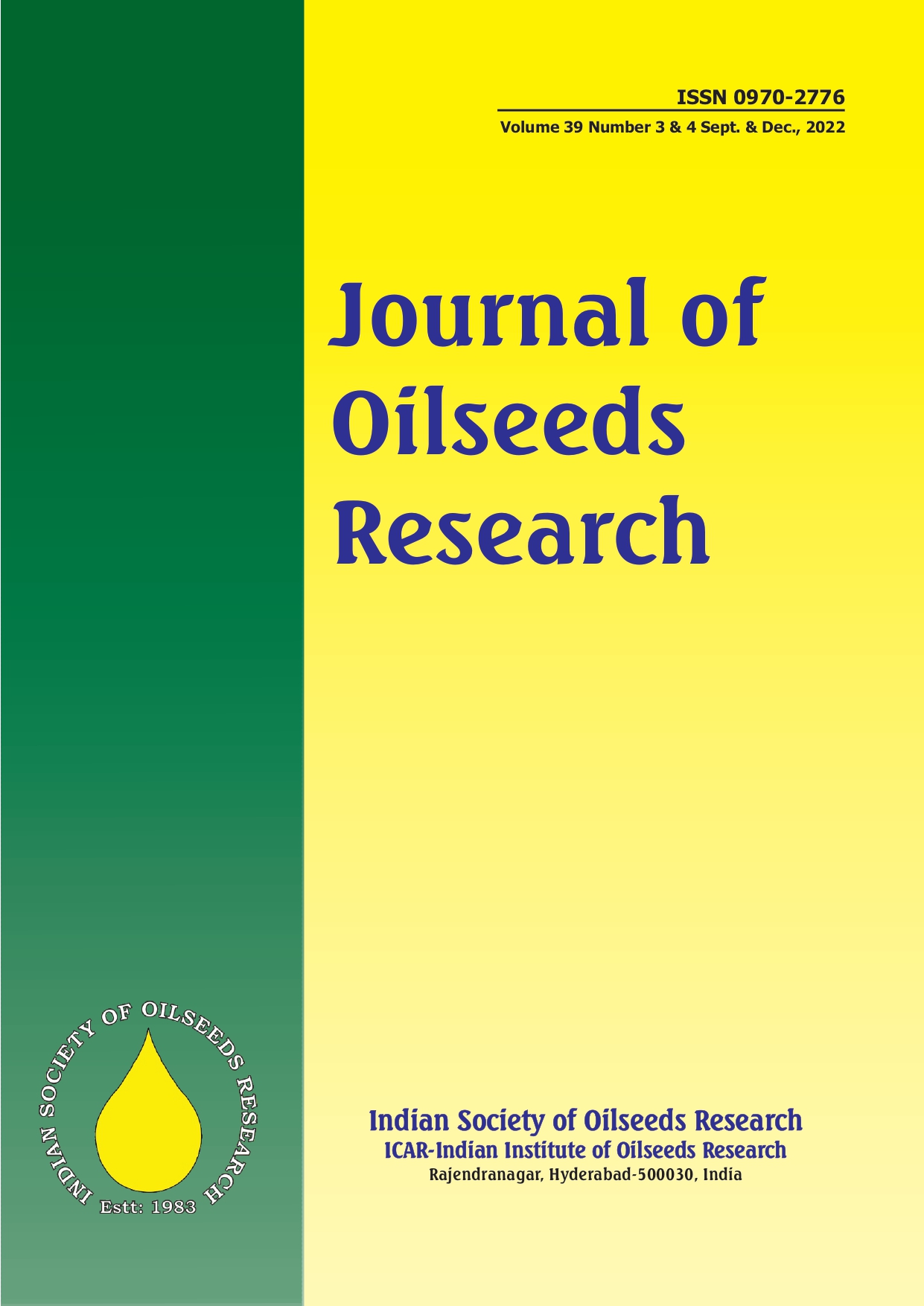A brief insight into the insect pest of sunflower (Helianthus annuus L.)
A BRIEF INSIGHT INTO THE INSECT PEST OF SUNFLOWER
370 / 3
Keywords:
Cultivation, Insect Pests, Pest management, Production, SunflowerAbstract
The sunflower (Helianthus annuus L.) crop has the capacity to quickly adapt to numerous agroecological niches and cropping systems in the Indian subcontinent due to its wide range of adaptation. The major barrier in sunflower production is insect pest damage. It causes damages up to 35-40% damages. The sunflower environment is home to a wide variety of both useful and harmful insect species. Though more than fifty insect species have been reported on sunflower, cutworms (Agrotis spp.), leaf hoppers (Amrasca biguttula biguttula), plant hopper (Empoasca spp.), thrips (Thrips palmi), whitefly (Bemisia tabaci), defoliators (Spilosoma obliqua, Spodoptera litura, and Plusia orichalcea), capitulum borer (Helicoverpa armigera) are major pests of economic concern. With over 180 host plants, including significant crops, Helicoverpa armigera is one of the most devastating and polyphagous insect pests of sunflower.
Downloads
References
Abdel-Gawaad A A and El-Shazli A Y 1971. Studies on common cutworm Agrotis ipsilon Rott. Lifecycle and habits. Zeitschrift fuer Angewandte Entomologie, 68: 409-412.
Ayyar T V R 1940. Hand book of Economic Entomology for South India. Coimbatore, Tamil Nadu.
Bartholomew Saanu Adeleke and Olubukola Oluranti Babalola 2020. Oilseed crop sunflower (Helianthus annuus) as a source of food: Nutritional and health benefits. Food Science and Nutrition, 8(9): 4666-4684.
Basappa H 1995. Insect Pest Management in Sunflower-Innovative Approaches, Directorate of Oilseeds Research, Hyderabad, India.
Central Insecticide Board, 2022. https://ppqs.gov.in/centralinsecticides-board.
Chandani Kamble and Tukaram Vithalaro Sathe, 2015. Incidence and host plants for Amrasca biguttula from Kolhapur region, India. International Journal of Drug Development and Research, 5(3): 3658-3661.
Charlet L D 1992. Seasonal abundance and parasitismofsunflower beetle (Coleoptera: Chrysomelidae) on cultivated sunflower in northern great plains. Journal of Economic Entomology, 85: 766-771.
Fabian Fernandez-Luqueno, Fernando Lopez Valdez, Mariana Miranda-Arambula 2014. An Introduction to Sunflower Crop. Environmental Influences and Pest and Disease, 18 pp.
Faqir Muhammed Anjum, Muhammed Nadeem, Muhammed Issa Khan and Shahs Hussain 2012. Nutritional and therapeutic potential of sunflower seeds. British Food Journal, 114(4). DOI:10.1108/00070701211219559.
Geetha S and Hegde M G 2018. Incidence of insect pest and natural enemies in sunflower crop ecosystem. International Journal of Current Microbiology and Applied Sciences, 7(9): 1593-1601.
Harris C R, Mazurek J H and White G V 1962. The life history of black cutworm, Agrotis ipsilon under controlled conditions. Canadian Entomologist, 94: 1183-1187
Janet J Knodel, Charlet Laurence and Gavloski, John 2010. Integrated Pest Management of Sunflower Insect Pest in
Northern Great Plains. North Dakota State University, Fargo, ND.
Jones, Christopher M, Parry, Hazel, Tay, Wee Tek, Reynolds, Don R, Chapman and Jason 2019. Movement ecology of pest Helicoverpa armigera: Implications for ongoing spread. Annual Review of Entomology, 64: 277-295.
Kakakhel S A, Islam N, Amjad M and Malik M A 2000. Insect Pest complex of sunflower, Helianthus annus L. Pakistan Journal of Biological Sciences, 3: 669-671.
Munir Ahmad, Abdul Ghaffar and Muhammed Rafiq 2013. Host plants of leaf worm, Spodoptera litura (Fabricius) (Lepidoptera: Noctuidae) in Pakistan. Asian Journal of Agriculture and Biology, 1(1): 23-28.
Nayak S K, Nilambar Khura and Moharana R L 2022. Seasonal abundance of insect pest and natural enemies in sunflower in the Western undulation zone of Odisha. The Pharma Innovation Journal, 11(5): 245-248.
Nirakar R and Mahalik J K 2008. Insect Pests Management in Sunflower, Orissa Review.
Ramaiyer Varatharajan, S Amar Singh, T James Kesia, O D Singh 1998. Life table of Spilosoma obliqua on sunflower. International Journal of Tropical Insect Science, 18(04).
Rivera-Vega L J, Galbraith D A, Grozinger C M and Felton G W 2017. Host plant driven transcriptome plasticity in the salivary glands of cabbage looper (Trichoplusia ni). PLoS ONE, 12(8): DOI:10.1371/journal.pone.0182636.
Rogers C E 1992. Insect pest and strategies for their management in cultivated sunflower. Field Crop Research, 30(3-4): 301-332.
Ruchika Nandha, Harpal Singh, Kamlesh Garg and Seema Rani 2014. Therapeutic potential of sunflower seeds. International Journal of Research and Development in Pharmacy and Life Science, 3: 967-972.
Selvaraj K, Gotyal B S, Satyapathy S and Ramasubramanian 2015. First record of Protapanteles obliquae (Wilkinson) (Braconidae:Hymenoptera) on Spilosoma obliqua on jute crop. Journal of Biological Control, 29(3): 169-170.
Shorey H H Andres and L A Hale 1962. The biology of Trichoplusia ni, Life history and behaviour. Annals of the Entomological Society of America, 55(5): 591-597.
Shubh Pravat Singh Yadav, Vivek Lahutiya, Prava Paudel 2022. A review on biology, ecology and management tactices of Helicoverpa armigera (Noctuidae, Lepidoptera). Turkish Journal of Agriculture-Food Science and Technology, 10(12): 2467-2476.
